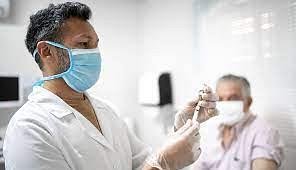COVID-19 vaccine side effects: The positives about feeling bad
The development of multiple vaccines against SARS-CoV-2 virus, the cause of coronavirus disease 2019 (COVID-19), within one year of the epidemic is unprecedented and an immense accomplishment. The efficacy of many developed vaccines exceeded expectations, and there are high hopes that the epidemic will soon be in the past. Yet several challenges remain. Vaccinations are far from complete in developed nations and have barely begun in many developing nations, suggesting that achieving world-wide herd immunity against the virus may take several years. There is also the growing problem of vaccine hesitancy, especially in the young who generally cope well with COVID-19, with minimal or even no symptoms. In addition, it is well documented that COVID-19 vaccines can have substantial side effects; indeed, fear of these side effects may approach that of SARS-CoV-2 infection itself in some populations. Therefore, what are the side effects of COVID-19 vaccines - and could they paradoxically be beneficial?
In keeping with their rapid development and production, the mRNA-based vaccines of Pfizer and Moderna have received the most attention with regard to the side effects of vaccination (1, 2). As with other vaccines, these effects can on rare occasion be the result of delayed-onset, local allergic reactions. In the vast majority of cases, however, the major complaint is a combination of fever, headache, myalgia and general malaise, affecting ~60% of recipients after the second dose of the vaccines. These symptoms can be troubling and have been the subject of comment in the press and in top scientific journals. Yet, other than vague reference to an ongoing immune response, the actual cause of the side effects has received almost no attention. So what is the cause of these effects? As discussed here, most of the symptoms can likely be attributed simply to exuberant production of a cytokine that plays a vital role in potentiating early stages of the immune response, namely type I interferon (IFN-I).
The features and functions of IFN-I have been considered elsewhere (3, 4). In brief, IFN-I comprises a mixture of IFN-β, multiple subtypes of IFN-α, and several other IFNs. IFN-I together with closely related IFN-III (IFN-λ) are produced soon after contact with pathogens and have powerful anti-viral effects, acting throughout the body for IFN-I and within the respiratory system for IFN-III. These effects suppress local viral replication and thereby prevent dissemination of virus elsewhere. IFN-I is produced primarily by macrophages and dendritic cells (DC), including both conventional and plasmacytoid DC, and is elicited via interaction with pathogen-associated molecular patterns (PAMPs) expressed by the viral or bacterial pathogen concerned (Fig. 1). PAMPS then interact with complementary pattern recognition receptors (PRRs) expressed by DC, including toll-like receptors (TLRs) and members of the RIG-I-like receptor family; for mRNA-based vaccines, the PAMP (mRNA) is recognized by multiple PRRs, namely TLR7,8, and 9, RIG-I and MDA5.
Comments
There are 0 comments on this post






